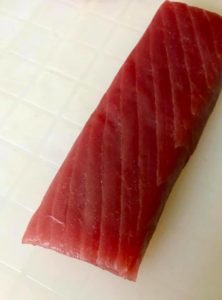 In Japan, Japanese sushi chefs have a different view of fish. From childbirth Japanese children learn to eat all the ocean has to offer.
In Japan, Japanese sushi chefs have a different view of fish. From childbirth Japanese children learn to eat all the ocean has to offer.
As a restaurant guest in Japan you will find that the menu in sushi restaurants looks different.
It is very normal that there are approx. 20 different kinds of seafood on the menu. In addition, the Japanese sushi restaurants replace the menu card several times a year.
This is because many fish can only be obtained in certain months over a year. Some fish species have to swim many kilometers every year, for example, to spawn.
If a fish is not in season it is not on the menu card.
At Sushi course for beginners you learn to cook tasty sushi with the most sought after fish for sushi in Denmark.
_
Zoë has lectured and held sushi courses for A. P. Moller – Maersk, Hugo Boss Nordic, Novo Nordisk, Novartis, Velux, Gorrissen Federspiel, Beierholm revision, Elbek & Vejrup and many more.









